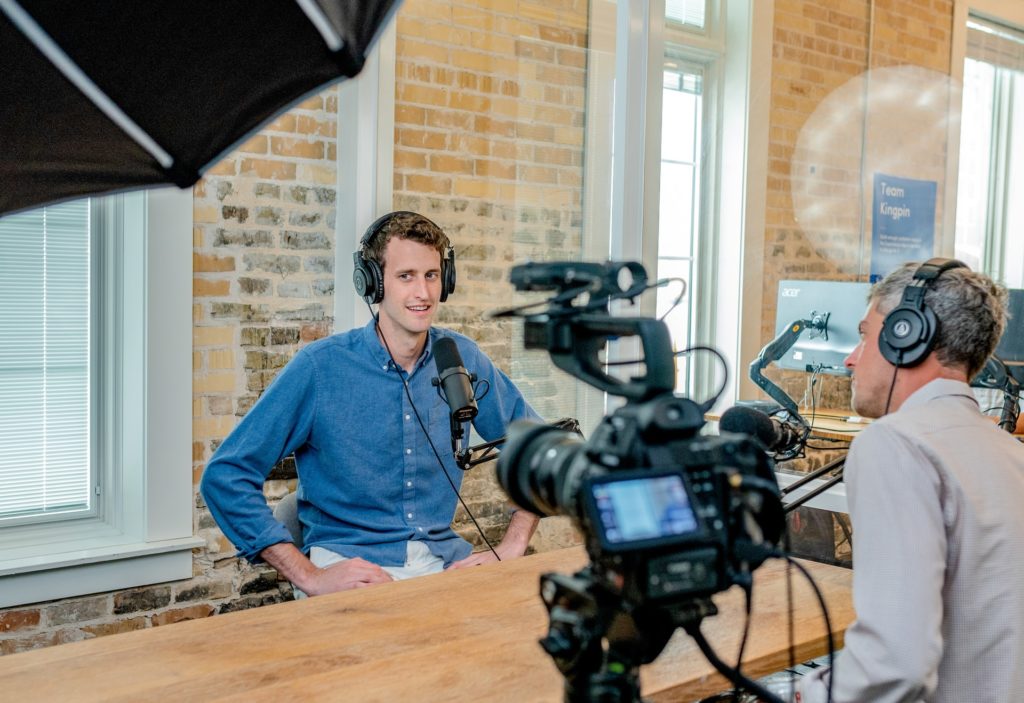The popularity of podcasts has ballooned in recent years, with estimates putting the number of US listeners at 144 million by 2025. Top financial firms are taking advantage of the popularity of this medium by creating educational content that connects them with potential customers. Producing a successful finance podcast helps companies market themselves, while also positioning themselves as thought leaders in their fields.
The finance industry is no different. Now, top investment firms and banks are creating their own podcasts, or even multiple podcasts covering different financial subjects. Here are some guidelines for creating finance podcasts that will boost your corporate reputation and brand.
Selecting the Right Focus for a Finance Podcast
The most successful finance podcasts select topics geared toward a specific audience. For instance, JP Morgan’s Women on the Move addresses topics aimed at improving financial equality and supporting women in the workplace.
Other top finance podcasts address audiences based on their interest in a particular topic, like mergers and acquisitions or real estate investing. Others direct their advice toward a specific age demographic, like Millennial Investing.
Naturally, larger investment firms like Goldman Sachs could cover wide-ranging subjects and won’t want to pigeonhole themselves by focusing overly specific topics. This dilemma could be the reason that Goldman Sachs produces three separate podcasts. Clearly, the global investment group finds plenty of material to cover in this medium.

Keeping Financial Topics Fresh
Close to 75% of podcast listeners are tuning in to learn. However, even the most educational content won’t gain a large audience unless it’s engaging. There are several ways to keep generating exciting episodes to get an audience hooked.
Cover timely issues
The news cycle is full of events that influence the stock market, home prices and other related issues. Taking a topic-of-the-moment approach means that the day’s headlines can fuel episodes that discuss the things people want to know about right now.
Invite new perspectives
Some podcasts might focus on evergreen topics that people may listen to today or in three years. One way to avoid falling into a rut with this format is to invite guests to the show. Interviewing someone with a recognizable name has clear advantages and can help attract an audience. If getting finance celebrities into the room isn’t possible, finding people who work for recognizable brands can also offer advantages.
Take calls from the audience
Some financial podcasts might focus on issues that impact everyday people, not just those who work in finance-related fields or have some level of expertise. Taking calls from audience members, looking at specific challenges people face, and ways to address them is a tried and true format that can prevent podcasts from growing stale.
Remember that these formats aren’t mutually exclusive. In So Money, personal finance expert Farnoosh Torabi tackles ongoing topics like paying off school loans and issues of the moment like how geopolitical events will impact financial security. Torabi also interviews authors, journalists, business owners, and other experts to get their take on financial subjects. Each Friday, she invites finance questions from her listeners and offers advice that applies to average investors or individuals facing everyday financial struggles. Using all three tactics, Torabi created one of the world’s most popular finance podcasts.

Getting Attention and Growing Your Audience
Even the best finance podcasts won’t provide benefits if people don’t listen. Growing a following on iTunes is critical. Around 70% of podcast listening happens on this platform. Although it can be challenging to gain traction, there are a few ways to jump-start a podcast and find interested listeners.
Lean heavily into social media
Posting on every social media outlet the company uses and posting multiple times for each episode can help the podcast get attention. Leveraging Twitter, Facebook, Instagram, LinkedIn or another platform the business uses to post snippets, quotes or promotions can help get the word out and garner interest.
Lean into guests’ social media too
If the podcast hosts guests who have large followings, getting those people to post about the podcast episode on which they’ll be appearing will also offer benefits.
Say “yes” to interviews on other podcasts
When a host appears on a partner’s podcast, they have an opportunity to plug their own show in front of another audience.
Getting people to turn on a podcast is the first step, but those potential audience members must have the tools they need to consume the podcast. Without suitable accommodations, producers risk alienating people and stymying their growth.
Making Your Finance Podcast Accessible
Podcasts are primarily an audio medium, but that format doesn’t work for everyone. Not all “listeners” are “listening.”
Offering a podcast transcript is critical because it accommodates audience members who are Deaf and hard of hearing and provides another format for people who prefer to consume content by reading rather than listening. Professional captioning and transcription services like Verbit offer efficient solutions for financial firms, including accurate transcripts that improve search engine optimization (SEO).
Also, a recent lawsuit against SiriusXM for failing to caption or transcribe podcasts highlights the importance of providing accessibility services. Ensuring a user-friendly, accessible experience is just one of many podcast best practices.

Posting Finance Podcast Videos on YouTube
In some cases, posting a video of the podcast may involve footage of the host and speakers talking, allowing the audience to feel more connected. However, even posting a video that includes a backdrop or static images and the audio is beneficial.
The Investor’s Podcast Network channel on YouTube, which has close to 80K subscribers, showcases the potential of using this platform to promote podcasts, even with simple backdrop imagery. The channel includes the widely popular podcast We Study Billionaires as well as several other big names in the finance podcast realm, such as Bitcoin Fundamentals and Real Estate 101.
In fact, because YouTube is the second most-used search engine after Google, the amount of traffic on the site means that posting there can potentially attract audience members who wouldn’t have otherwise found the podcast. Also, posting on YouTube with captions means that people who are Deaf and hard of hearing have a chance to follow along.
Finally, using YouTube can boost SEO. Google can use captions to identify search terms, which means videos of podcasts with captions can serve a similar purpose to written content, and the producing company gets more results from their efforts.
Taking Away Basic Best Practices
Even with great ideas, compelling speakers, strong promotion and accessible content, creating a popular finance podcast is impossible without paying attention to the basics.
Technicalities
Good equipment isn’t too difficult to come by these days, and it’s essential for creating a quality podcast. No one wants to listen to scratchy audio, so a good microphone and other tools are essential.
Using a sound room is ideal, but at the very least, producers should be in a quiet place and avoid background noises like barking dogs or sirens.
Perfect Timing
Long-winded podcast hosts can overstay their welcome. Many successful podcasts are around 15-20 minutes long.
When it comes to creating a longer podcast, the important factor is that the producer understands the audience. Some listeners may want more in-depth financial analysis and appreciate a longer format.
Build a Library
Posting just one episode can frustrate a new listener. When starting a new podcast, it’s wise to build out a small library of episodes before going live.
Recording and posting three episodes at once is a better way to get new listeners hooked and inspire them to subscribe to the channel.
The popularity of existing finance podcasts indicates a strong appetite for content in this field. When done well, these programs offer valuable insights while entertaining listeners and building a loyal customer base.
As you look to develop or enhance your podcasts, you can turn to Verbit as an essential partner. Verbit has a specialized team and technology built to help financial institutions specifically with their captioning, transcription and audio description efforts for podcasts and other video content. Verbit is currently working with finance-focused media outlets like The Motley Fool. To learn how our accessibility solutions can help you produce better podcasts, videos and other content, contact us.




